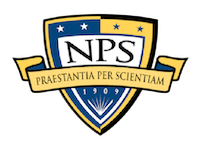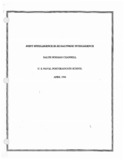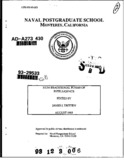Joint Intelligence Is JIC/JAC/NMJIC Intelligence
Abstract
Intelligence support to the operating forces has been restructured to provide intelligence required
along the joint command organization. Although there have been joint intelligence organizations
previously, most intelligence support was provided along service lines. The new structure is a major departure from the previous organization. The new structure is primarily a reflection of the new joint command structure with its emphasis on the CJCS, the Joint Staff, the CINC's, and the Joint Task Force. The new intelligence structure was strongly insisted upon by the DoD and key congressional committees. Major cuts in the intelligence community (funding and personnel) were also important factors in the restructuring. The services were generally opposed
to the new concept, although Naval Intelligence was quick to recognize the advantages of early
participation.
Another key factor enabling the establishment of centralized JlC's was the advent of decentralized
computer based systems and improved data communications connectivity, permitting centralized data
storage and rapid dissemination. The appearance of the Joint Defense Intelligence Support System
(JDISS) and the Joint Worldwide Intelligence Communications System (JWICS) are prime examples of
the availability of the new systems and connectivity.
Another major development is the production of the new joint intelligence publications, and the
intelligence Tactics, Techniques, and Procedures (TTP's). These publications are establishing common
doctrine and terms for the military intelligence community. However, some confusion still exists
regarding intelligence terminology. For example, the Navy still uses the term OPINTEL to mean what is now defined more closely as tactical intelligence. This paper uses terms as defined in Joint Pub 2-0, "Joint Doctrine for Intelligence Support to Operations", in which strategic, operational, and tactical intelligence are described as supporting those three levels of warfare, and intelligence production is divided among I&W, current, general military intelligence (GMI), targeting, and technical categories of intelligence.
The remainder of this paper will describe the structure and functions of the major JICs, starting with the National Military Joint Intelligence Center (NMJIC) in Washington, D.C.
Rights
This publication is a work of the U.S. Government as defined in Title 17, United States Code, Section 101. Copyright protection is not available for this work in the United States.Collections
Related items
Showing items related by title, author, creator and subject.
-
Creating a mix of spooks and suits : a new role for intelligence
Moyer, Shawn P. (Monterey, California. Naval Postgraduate School, 2003-03);The devastating events of 11 September 2001 demonstrated the United States no longer enjoys a sense of invulnerability to attacks on American soil. On 25 November 2002, President Bush signed legislation creating a Department ... -
Homeland Security Affairs Journal, Volume VII - 2011, 10 Years After: The 9/11 Essays
Naval Postgraduate School Center for Homeland Defense and Security (CHDS) (Monterey, California. Naval Postgraduate SchoolCenter for Homeland Defense and Security, 2011);10 Years After: the 9/11 Essays. Homeland Security Affairs (HSA) is pleased to present this special collection of essays in remembrance of the ten-year anniversary of September 11, 2001. We chose to honor those who lost ... -
Non-traditional forms of intelligence
Tritten, James J. (1993-08); NPS-NS-93-003Report considers the new requirements for non-traditional forms of intelligence. Emphasis on new scenarios which require specialists in new forms of intelligence and areas of expertise. Due to the pace of rapid change and ...



 Paper (8.486Mb)
Paper (8.486Mb)

